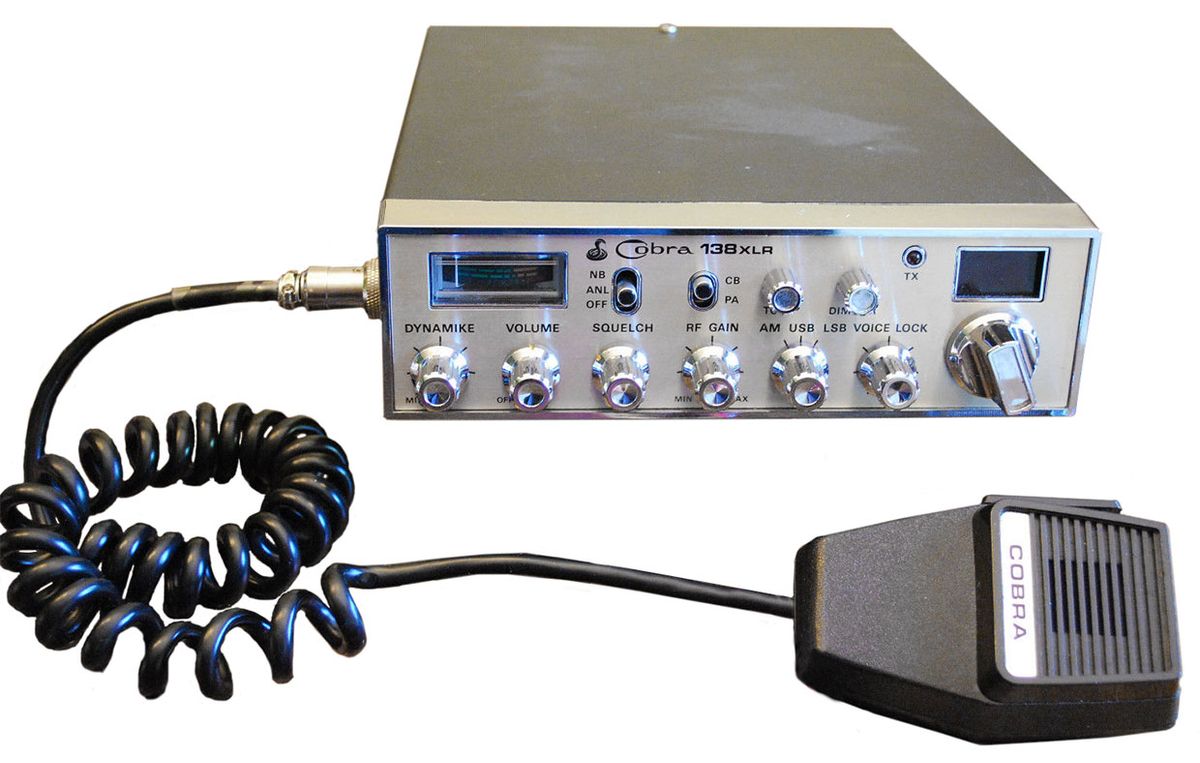The Consumer Electronics Hall of Fame: Cobra 138XLR Single Sideband CB Radio
The Cobra 138XLR was the most legendary CB radio during the brief but glorious golden age of CB radios

Out of the box, the Cobra 138XLR was one of the more capable Citizen’s Band (CB) radios available in the late 1970s, the heyday for the systems. But what gained the 138XLR a devoted following was audio quality combined with a particular amenability to postsale modifications.
It’s impossible to understand CB radios devoid of their cultural context in the United States during a weird period. The 1970s were a deeply faddish time in the country, and one of the biggest fads was CB radio (see also: pet rocks, macramé, and streaking, a pastime that entailed running naked through a public venue, preferably on live television). CB radios figure in the 1975 hit single “Convoy” (which even by the bizarre musical standards of the time improbably rose to No. 1 on several worldwide pop and country charts) and also in such motion pictures as Smokey and the Bandit, Citizens Band, (both 1977) and Convoy (1978; it was inspired by the song). The references in popular entertainment underlined a fact that eluded even some of the millions of people who bought CB radios back then: Starting in the early 1970s, CB radios were tools of a trade—long-haul trucking.
Trucking is a solitary endeavor, and two-way CB radios provided a means of creating a community. Also, at the time, trucker pay was often dependent on how quickly goods were delivered. That encouraged truckers to drive much faster than the speed limit, which the federal government in 1974 reduced to 55 miles per hour (89 kilometers per hour). Truckers began using the radios to exceed the speed limit by alerting each other to the location of “smokies”—highway patrolmen. Other motorists caught on and began buying CBs for the same reason.
Truckers also had a culture of modifying their equipment. It started with their trucks (“rigs”) and it extended to their radios. Common CB mods included whip antennas and hacks such as additional power and stronger modulation, but those willing to dig into the innards of their radios figured out it was also possible to add more channels. For some people more is simply better, but for some truckers it meant creating channels unavailable to joyriders who thought drawling “breaker, breaker” into their CBs in a Burt Reynolds voice was endlessly hilarious. The use of such channels also made it harder for enterprising smokies who equipped themselves with their own CBs to monitor truckers’ discussions about circumventing speed limits.
Prior to 1977 or so, adding channels to CB radios was expensive and involved the painstaking business of installing and calibrating crystals. Crystals then were the traditional, inexpensive way of generating and maintaining a frequency in a small radio transmitter. Right about that time, however, radio manufacturers started replacing the crystals on their basic CB radio models with silicon-based phased lock loop (PLL) oscillators. Basically, a PLL used a voltage-controlled oscillator to establish a base frequency, and other electronics to compare that frequency to another one generated by one or more crystals. With a variable frequency divider between the voltage-controlled oscillator and the phase detector, the radio-transmit frequency was determined by the divider. Truckers soon discovered that the PLLs were programmable, and that the process of programming them to support additional channels was cheap and easy.

Cobra sourced its radio from Uniden, in Japan, which called it the 858SSB. Inside the unit was a PLL chip designed by Uniden, and designated the uPD858. Truckers eventually found the uPD858 could be reprogrammed to support 399 channels—many more than any other PLL, and fantastically more than the 40 channels the FCC had set aside for commercial CBs.
So when the Cobra 138XLR was introduced in 1977, listing for about US $150, it had a lot going for it. But so, too, did the offerings from a couple of other manufacturers that also used the Uniden hardware. The 138XLR had another advantage, though, that appealed to the truckers who enjoyed tinkering. It was one of the few CB radios built with an audio-clipping circuit. For those willing to spend a little extra time tuning their radios, the 138XLR would deliver some of the best sound quality it was possible to get out of CBs.
Not only did the 138XLR became one of the biggest-selling CB radios, its introduction helped make 1977 the all-time high mark for CB sales in the United States, with 13 million radios purchased that year. Unfortunately for truckers, the channels they added operated above the maximum frequency the Federal Communications Commission had set aside for CB radio (the official range is between 26.965 megahertz and 27.405 MHz). Users who had a legal right to use those frequencies complained to the FCC about incessant interference from CB users. The FCC began levying hefty fines on truckers caught illegally using those channels; some truckers were said to have lost their jobs. In response to the FCC crackdown, Cobra discontinued the model in 1978.


